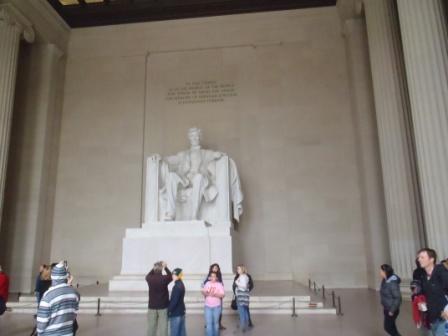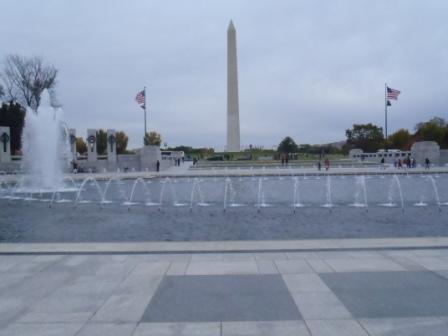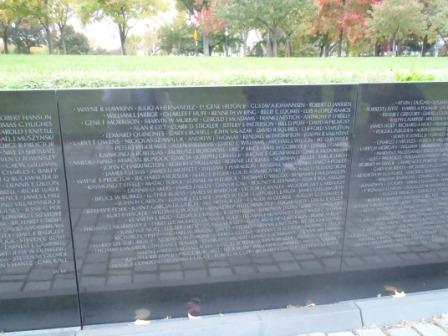War and Remembrance

VulcanSpirit
Richard & Alison Brunstrom
Mon 14 Nov 2011 15:30
|
Washington was laid out as the Federal capital by a
Frenchman, and it shows. The vast avenue leading from the US Capitol
(parliament), via the Washington Monument to the Lincoln Memorial near the
Potomac, and lined by the quite superb museums of the Smithsonian, is
justifiably world famous. It really is outstanding; Washington is well worth a
lengthy visit - unfortunately we only managed a day.
The USA does national war memorials rather well.
Here are several of them. Firstly the Lincoln memorial, which rightly
describes itself as a temple.
 Inside is a gigantic and truly impressive statue of
the seated Lincoln, regarded by Americans as the saviour of their Union in the
Civil War. Here he is:
 Two of his speeches are inscribed on the walls -
his wonderful use of words makes the current generation of US tongue-tied
presidential hopefuls look just pathetic. It is difficult even to imagine the
carnage of the Civil War - over 620 000 Americans lost their lives, compared
with 'only' 400 000 in WW2. This place is a temple, and it works.
Here is the Korean War memorial. A haunting patrol
of larger than lifesize US soldiers, surrounded by details of the number of dead
from each country in the UN mission. Enormously impactive.
 And WW2, with the Washington monument (closed as a
result of the earthquake) in the background. The sense of space and
stretching views create an appropriate and effective atmosphere of
remembrance.
 And finally the famous Vietnam memorial. The
memorial had its genesis in the idea of Jan Scruggs, a former infantry corporal
in the Korean War. The fund to establish it was set up by a group of Vietnam
vets in 1979 to create a tangible symbol, with four criteria: 1. that it would
be reflective and contemplative in character 2. that it harmonise with its
surroundings, especially the other national memorials 3. that it contain the
names of all who died or remain missing, and 4. that it make no political
statement about the war.
A national competition to design the memorial was
won (by unanimous decision of the jury) by a 21 year old student, Maya Lin
of Athens Ohio. Lin chose polished black granite for the walls, which point
towards the Washington Monument and the Lincoln Memorial. The mirrorlike surface
of the granite reflects the surroundings as you can see in the picture below
which shows details of some of the 58 267 dead or missing Americans resulting
from this entirely futile carnage.
 Interestingly the US National Park Service
provides facilities for people to take rubbings of individual names as a
personal memorial - a popular and very moving process. A wonderful memorial to
the American lives wasted in this terrible and misconceived conflict - but of
course no mention of the even more hideous losses on the other side (a partisan
fault, if such it be, common to war memorials the world over).
And finally, the White House without a picture of
which no visit to Washington would be complete. It really is a splendid
building, and as often remarked, surprisingly small. No Buckingham Palace,
this.
 |